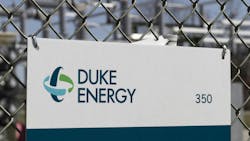Duke Energy Seeks State and Federal Regulators Permission to Combine Duke Energy Carolinas and Duke Energy Progress
Duke Energy has asked state and federal regulators for permission to combine its two electric utilities, Duke Energy Carolinas (DEC) and Duke Energy Progress (DEP) in the Carolinas.
DEC and DEP have operated as separate utilities since the 2012 merger of Duke Energy and Progress Energy. The proposed combination is more in line with reorganizing two corporate divisions into one, while legally considering this as a merger.
The strategic reorganization will create a single utility, streamlining operations and reducing costs for customers. The targeted effective date of the combination is January 1, 2027, depending on the approval from the North Carolina Utilities Commission, the Public Service Commission of South Carolina and the Federal Energy Regulatory Commission, which will continue to oversee and regulate the combined utility.
"Combining our two utilities reduces customer costs, simplifies operations, supports economic growth and promotes regulatory efficiencies, all of which will create value for customers in both states," said Kodwo Ghartey-Tagoe, executive vice president and CEO of Duke Energy Carolinas. "There will be no immediate changes to retail customer rates or services."
Duke Energy is modernizing its infrastructure to meet the Carolinas' growing energy needs, while ensuring customers continue to have reliable service at the lowest reasonable cost.
Operating as a single utility will allow DEC and DEP to meet the growing needs of the Carolinas at a much lower cost. Combining the two utilities will result in more efficient planning across the utilities' combined 52,000-square-mile service area in the Carolinas, avoid redundant investments, improve grid reliability and more.
A combination will help Duke Energy build fewer resources to meet growth needs as compared to DEC and DEP working as separate utilities. The combined companies will also be able to operate existing resources more cost-effectively by running fewer and less expensive units, using less fuel, and reducing unit cycling on and off, saving maintenance costs.
Duke Energy evaluated the customer benefits of operating as a single, combined utility versus continuing to operate as two separate utilities. Duke Energy projects retail customer savings of more than $1 billion through 2038, after any expenses.
The savings are projected to occur between January 1, 2027 and 2038, the close of the planning horizon for the 2023 Carolinas Resource Plan. Additional customer savings will continue to be generated beyond 2038.
DEC and DEP retail rates will start to blend slowly, in future rate cases and future rider filings made after January 1, 2027. North Carolina and South Carolina will continue to regulate retail rates separately and will have independent discretion over the pace of retail rate integration.
As part of the 2012 merger of their holding companies, Duke Energy and Progress Energy received regulatory permission to jointly dispatch power generation resources in the Carolinas. Joint dispatch, fuel savings and other efficiencies have produced more than $1 billion in cumulative savings for customers. But regulations limit further coordination between the two utilities.
Benefits of operating as one utility:
- New generation and transmission: A combined utility can more effectively plan, execute and operate new generation and transmission in the Carolinas, locating new assets where they make the most sense across a broader geographic footprint.
- Better generation reliability: A combination will strengthen reliability by improving the balancing of distributed generation resources while reducing the need to restrict solar production due to oversupply, grid congestion or lack of demand.
- Less confusion: A combination will enable a more uniform approach in programs, services and rates. The company will implement changes – like simplifying rates and service offerings – over time with the goal of reducing customer confusion.
- More regulatory efficiencies: With two utilities each operating across two states, Duke Energy must maintain four retail rate structures, produce four separate annual filings – like those related to fuel costs – and more. A combination will reduce the time and expense of this regulatory compliance work by eliminating duplicative filings and proceedings.
